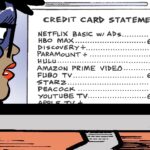 “Data Driven Thinking” is written by members of the media community and contains fresh ideas on the digital revolution in media.
“Data Driven Thinking” is written by members of the media community and contains fresh ideas on the digital revolution in media.
Today’s column is written by Daniel Davies, Vice President of US Operations at Digilant.
The exchange space is absurd.
Disagree? Okay, open another browser and visit beyondjane.com. Now wait for about 60 pixels and cookies to load onto your computer. Why on earth would a site, ostensibly about women’s lifestyle, need to drop 60 cookies onto your browser just for visiting its homepage? As someone who’s been in this space a while, I could perhaps explain the existence of 25 to 30 of those, which doesn’t make it any more acceptable. But the point is to show how far astray we’ve gone during the first five years of the ad exchange business.
Now look up at the top left corner of your current browser, at the URL you’re on now: AdExchanger.com. We get so involved in all of the data, tech and great ideas that have sprung up in this space, we sometimes forget about the concept that started it all: Exchange. That word – or the spirit of that word – is what got me so genuinely excited about this space all those years ago. I’d come from the contractually encumbered agency world rife with subjectivity, schmooze and vendor advantage. Like many, I found the advent of a truly open market exchange refreshing. I could get information about every single impression I bought and, even better, I could name my price. The Exchange isn’t just a marketplace; it’s the fundamental ideas predicating most of the great tech, data, analytics, and strategy behind that marketplace. It’s all based on the concept of a free, open, data-rich exchange that’s mutually beneficial to buyers and sellers. That foundation has become cracked.
When I started, I found much of The Exchange’s original promise to be true. But, as with many positive concepts, we in this very cluttered space have managed to mess it up. I could talk about overwrought data harvesting, or how advertisers are being taken for a ride along the attribution path, or how the freedom of buying has actually resulted in less knowledge of where an ad is running. Instead of doing that, I’ll ask a rare question: Where have exchanges gone wrong?
Exchanges have not fulfilled that original vision of an open, transparent and fair ad commerce environment. The exchange space isn’t fair. And I use this word in the way you might describe a baseball game as fair. There’s at least a basic assumption that all are held to equal and transparently understood rules and circumstances, so that those with the advantages of nature, intelligence or preparation have an opportunity to prevail. That’s not the case with exchanges. Sellers are given unilateral transparency and tools to optimize yield and make money, while buyers don’t benefit from those advantages. There are nuanced technical and economic disparities as well – including the very nature of how some exchange tags operate within a publisher’s page code – but these merit separate discussion. I should mention here that I’m not condemning all exchanges because they’re not all the same in this respect; some are closer to equitable than others. I am, however, saying that much of the correction can and should come from the role The Exchange plays these days.
To date, the ecosystem has been built to support the onboarding of publishers, some of whom have direct and immediate financial incentive to act badly, hire clickbots, falsify traffic, dishonorably harvest data, and contribute to the encroachment of “false” advertising (I use that word in quotes because the one I’d really like to use would be censored).
We now face the danger of the inevitable reaction to such an imbalanced ecosystem: that advertisers will become disgusted with this space and turn their backs.
Don’t get me wrong here. Onus falls on everyone – agencies, buying platforms, advertisers, pubs, SSPs. But the first big fix is for more exchanges to get back on board with this original idea (crazy as it seems) of a fair space, an even playing field with no unnatural advantage for buyer or seller. When this happens, we’ll get back to the original vision, the original promise of this space.
Let me paint a picture of how that will look. Illegitimate publishers will no longer be compensated for phony traffic and clicks, more premium advertisers will test the exchange space and even see good results (dare I say to non-DR ends), and top-tier publishers will feel compelled to trade their best inventory and get good prices for it. And one larger thing can happen, too. The tech that comes out of this healthier ecosystem will be truer, smarter and far more advanced than that born from the dirtier structure.
Players on both sides need to shape up, but it’s The Exchange that needs to make the game a fair one.
Follow Digilant (@Digilant_US) and AdExchanger (@adexchanger) on Twitter.













